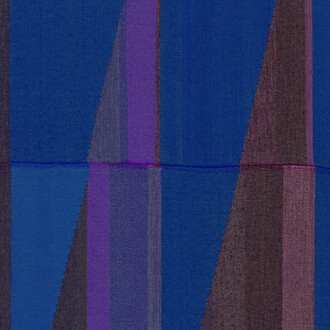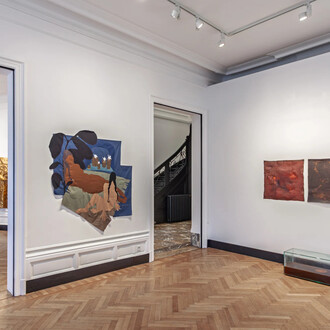Almine Rech Brussels is pleased to announce the first exhibition of Nathaniel Mary Quinn with the gallery.
Five years ago, Nathaniel Mary Quinn spontaneously created a portrait of his brother Charles. It emerged unexpectedly on the canvas and it represented a dramatic departure from the more topical, politically-oriented work he had been doing up until that time. More importantly, it opened the door to Quinn’s past and to the world with which he has continued to occupy himself, a world rooted in the people who have marked his extraordinary life.
Notably however, Quinn’s renderings are not portraits in the traditional sense. Memory’s elusiveness is central to Quinn’s drawings. The resulting protagonists assume a composite, collage-like appearance of stitched-together facial features and body parts to create fractured wholes. Quinn’s portraits jettison singularity in favor of a visual lexicon in which favored motifs make frequent appearances.
More than depicting specific individuals in other words, Quinn renders our shared humanity. It is this project that he takes as his subject at Almine Rech gallery. As always, Quinn’s protagonists are people he knows—in fact, in this case, they are people he knows well and deeply—and yet, for once, the focus is not on the story they tell or the history they expose. Rather, Quinn takes as his theme his process itself; that is, the very act of taking apart, assembling, and reassembling the subject’s interior life.
Quinn attempts to remove self-interpretation as much as possible, not only vis-à-vis his protagonists but also in relation to the materials he uses. To this end, Quinn adopts a unique working method whereby he covers up his composition leaving only the section on which he is at work visible. In the end, it is not so much that Quinn removes himself from the scene—indeed, that would be impossible—as that he attempts to withhold judgment allowing his subjects to exist in all their irreducible complexity.
These precepts have always defined Quinn’s work; however, in making them his direct and conscious focus, his work has in turn evolved. Interconnection; fluidity; reflection and cross-reflection—these are the visual tropes that define Quinn’s most recent body of work. What emerges is a collective portrait of the indomitable and uncontainable human spirit.
















